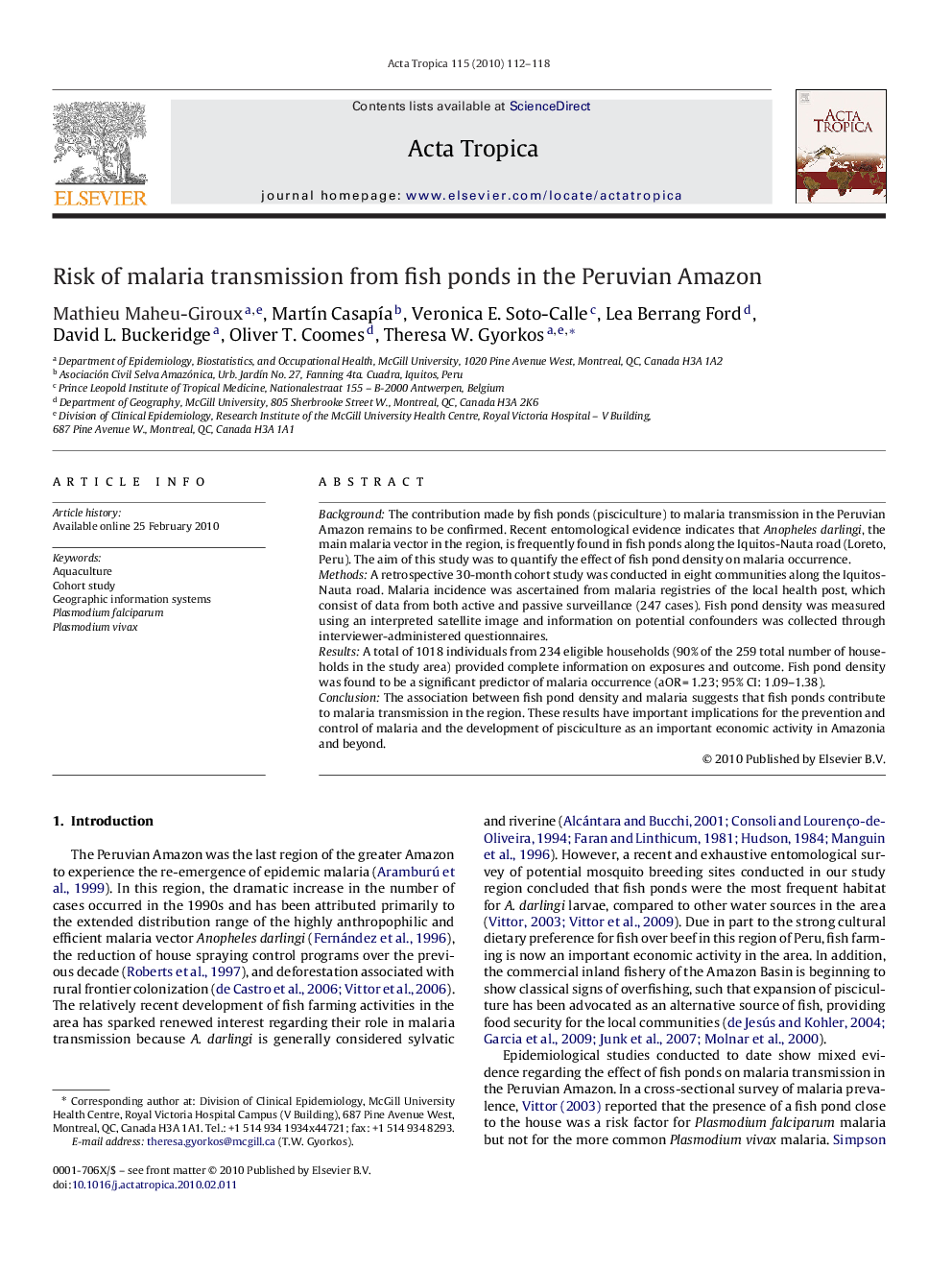| Article ID | Journal | Published Year | Pages | File Type |
|---|---|---|---|---|
| 3393975 | Acta Tropica | 2010 | 7 Pages |
BackgroundThe contribution made by fish ponds (pisciculture) to malaria transmission in the Peruvian Amazon remains to be confirmed. Recent entomological evidence indicates that Anopheles darlingi, the main malaria vector in the region, is frequently found in fish ponds along the Iquitos-Nauta road (Loreto, Peru). The aim of this study was to quantify the effect of fish pond density on malaria occurrence.MethodsA retrospective 30-month cohort study was conducted in eight communities along the Iquitos-Nauta road. Malaria incidence was ascertained from malaria registries of the local health post, which consist of data from both active and passive surveillance (247 cases). Fish pond density was measured using an interpreted satellite image and information on potential confounders was collected through interviewer-administered questionnaires.ResultsA total of 1018 individuals from 234 eligible households (90% of the 259 total number of households in the study area) provided complete information on exposures and outcome. Fish pond density was found to be a significant predictor of malaria occurrence (aOR = 1.23; 95% CI: 1.09–1.38).ConclusionThe association between fish pond density and malaria suggests that fish ponds contribute to malaria transmission in the region. These results have important implications for the prevention and control of malaria and the development of pisciculture as an important economic activity in Amazonia and beyond.
Graphical abstractFish farming, promoted as a measure of poverty alleviation and a source of nutrition, is associated with increased malaria transmission in the Peruvian Amazon.Figure optionsDownload full-size imageDownload as PowerPoint slide
